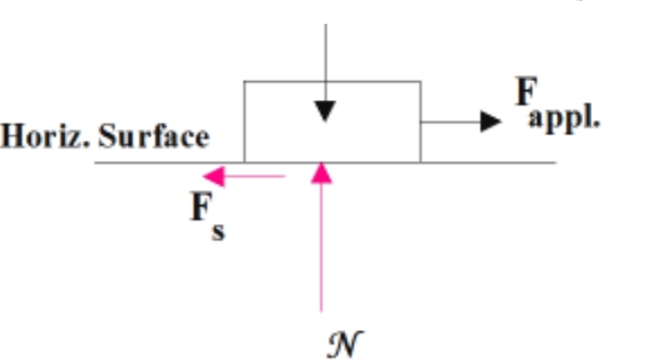1) Introduction:
Every moving object has velocity. It is denoted by v. The equations v = u + at, v² = u² + 2as are used to determine the velocity of an object. The velocity of an object can be determined if the motion and mass of the object are known.
2) Abstract:
Every moving object has its own velocity. Here we will discuss about the relationship between object’s velocity, kinetic energy, work and mass.
3)Methods & Calculations:
For the equation I have used this method.
3.1) Primary Calculations:
We know that- v²=u²+2as
Or, ½m×v²= ½m(Ek+W) [ Multiplied by ½]
Or, ½mv²= ½mu²+ mas
Or, ½mv²= ½mu²+Fs [ F=ma ]
Or, ½mv²= ½mu²+W [ W=Fs ]
Or, ½mv²= Ek+W. [ Ek=½mv² ]
Or, 2×½mv²= 2×(Ek+W) [ Multiplied by 2 ]
Or, mv²=2(Ek+W)
Or, mv²÷m= 2(Ek+W)÷m [ Divided by m ]
Or, v²= 2(Ek+W)÷m
So, v²=2(Ek+W)÷m ____________(i)
3.2) Secondary Calculations:
If (Ek+W)=2(Ek+W) then-
v'²= 4(Ek+W)÷m
So, v'²÷v²= {4(Ek+W)÷m} ÷ {2(Ek+W)÷m}
= {4(Ek+W)÷m} × {m÷2(Ek+W)}
= 2
So, v'²=2v²
Again, If (Ek+W)=½ (Ek+W) then-
v'²=2×½(Ek+W)÷m
= (Ek+W)÷m
So, v'²÷v²= {(Ek+W)÷m}÷{2(Ek+W)÷m}
= {(Ek+W)÷m} × {m÷2(Ek+W)}
=½
An increase in the value of the square of the velocity of an object increases proportionally as the value of the sum of the motions and acts of the object increases, and a square of the value of the velocity of the object decreases proportionately as the value of the sum of the motions and acts of the object decreases.
So, The square value of the velocity of an object is proportional to the sum of the kinetic energy and the work done.
So, (Ek+W)∞v²____________(ii)
If m=2m then-
v'²=2(Ek+W)÷m
So, v'²÷v²= {2(Ek+W)÷2m} ÷ {2(Ek+W)÷m}
= {2(Ek+W)÷2m} × {m÷2(Ek+W)}
= ½
So, v'²=½v²
Again, If m=½m then-
v'²=2(Ek+W)÷½m
=4(Ek+W)÷m
So, v'²÷v²= {4(Ek+W)÷m} ÷ {2(Ek+W)÷m}
= {4(Ek+W)÷m} × {m÷2(Ek+W)}
= 2
So, v'²=2v²
If the mass of the object increases, then the square of the velocity decreases disproportionally, and if the mass of the object decreases, then the square of the velocity increases disproportionally.
Thus, the value of the square of the velocity of the object is disproportionate to the value of the mass.
So, v²∞1÷m_________(iii)
From ii & iii number equation we get-
(Ek+W)∞v²____________(ii)
v²∞1÷m_________(iii)
The graph of ii no. equation-
The graph of iii no. equation-
3.3) Definitive Calculations:
Again, From ii and iii number equation-
v²∞(Ek+W)×1÷m
or, v²∞(Ek+W)÷m
So, v²=ζ₀(Ek+W)÷m________(iv)
3.4) Constant’s Calculations:
From, iv number equation we can get
v²=ζ₀(Ek+W)÷m
Here, Here, ζ₀- is a proportional constant. From (i) equation-
v²=2(Ek+W)÷m
If ζ₀=2 then, v²=ζ₀(Ek+W)÷m
So, the value of ζ₀ is 3. This constant is unit less.
From, iv number equation we can get
v²=ζ₀(Ek+W)÷m
or, m×v²={ ζ₀(Ek+W)÷m}×m [ Multiplied by m ]
or, mv²= ζ₀(Ek+W)
or, ζ₀(Ek+W)=mv² [ Transforms ]
or, ζ₀= mv²÷(Ek+W) [ Transforms]
So, ζ₀= mv²÷(Ek+W)_______(v)
Here, the unit of quantities-
m= kg, Ek= J= N m= kgm²s⁻²
While, W= Ek therefore W= kgm²s⁻²
So, ζ₀= mv²÷(Ek+W)
= kg×m²s⁻²÷( kgm²s⁻²+ kgm²s⁻²)
= kgm²s⁻²÷2 kgm²s⁻²
= ∞
So, ζ₀ this constant is unit less & dimension less.
So, ζ₀= 2
3.5) Equation Calculation:
From iv no. equation we can get-
v²=ζ₀(Ek+W)÷m________(iv)
Conditionally, Ek∞u²
If u²=0 then Ek=0
So, v²=ζ₀×W ÷ m
Here, ζ₀= Undefined
W= N m= kgms⁻²×m= kgm²s⁻²
m= kg
v²= kgm²s⁻²÷kg
= m²s⁻²
So, v= ms⁻¹
4) Result:
So, we can say that-
The value of the square of the velocity of a moving object-
i) The motion of that object is proportional to the sum of energy and work.
ii) The mass of the object is disproportionate to the value.
5) Conditions of this law:
i) This formula applies to moving objects in a plane. This formula does not apply to tilted surfaces, freely falling objects and stationary objects.
ii) Indications-
Ek=½mu²
Or, Ek= constant × u²
Or, Ek∞u²
So, Ek∞u²
The kinetic energy is proportional to the square of the primordial velocity of the object.
In this formula, the kinetic energy of an object means the kinetic energy stored in the object.
iii) The force of friction does not apply to this formula.
6) Conclusion:
From this equation we get that if we know the value of kinetic energy, work & mass of a moving object we can get the value of velocity of the moving object.














.png)
0 Comments